The Brothers Grimm (die Brüder Grimm or die Gebrüder Grimm), Jacob (1785–1863) and Wilhelm Grimm (1786–1859), were German academics, philologists, cultural researchers, lexicographers and authors who together specialized in collecting and publishing folklore during the 19th century. They were among the best-known storytellers of folk tales, and popularized stories such as "Cinderella" ("Aschenputtel"), "The Frog Prince" ("Der Froschkönig"), "The Goose-Girl" ("Die Gänsemagd"), "Hansel and Gretel" ("Hänsel und Gretel"), "Rapunzel", "Rumpelstiltskin" ("Rumpelstilzchen"),"Sleeping Beauty" ("Dornröschen"), and "Snow White" ("Schneewittchen"). Their first collection of folk tales, Children's and Household Tales(Kinder- und Hausmärchen), was published in 1812.
Little Red Riding Hood.

"Little Red Riding Hood", or "Little Red Ridinghood", also known as "Little Red Cap" or simply "Red Riding Hood", is a European fairy tale about a young girl and a Big Bad Wolf.[1] Its origins can be traced back to the 10th century by several European folk tales, including one from Italy called The False Grandmother (Italian: La finta nonna), later written among others by Italo Calvino in the Italian Folktales collection; the best known versions were written by Charles Perrault and Brothers Grimm.[2] The story has been changed considerably in various retellings and subjected to numerous modern adaptations and readings. It is number 333 in the Aarne-Thompson classification system for folktales.[3]Variations of the story have developed, incorporating various cultural beliefs and regional dialects into the story. An example of this is "Kawoni's Journey Across the Mountain: A Cherokee Little Red Riding Hood", which introduces Cherokee myths and language into the traditional story. Another such example is "Petite Rouge Riding Hood", which approaches the story from a Cajun perspective.
Sleeping Beauty.

"Sleeping Beauty" (French: La Belle au bois dormant "The Beauty Sleeping in the Wood") by Charles Perrault or "Little Briar Rose" (German: Dornröschen) by the Brothers Grimm is a classic fairy tale written by Charles Perrault and the Brothers Grimm, which involves a beautiful princess, a sleeping enchantment, and a handsome prince. The version collected by the Brothers Grimm was an orally transmitted version of the originally literary tale published by Charles Perrault in Histoires ou contes du temps passé in 1697.[1] This in turn was based on Sun, Moon, and Talia by Italian poet Giambattista Basile (published posthumously in 1634), which was in turn based on one or more folk tales. The earliest known version of the story is Perceforest, composed between 1330 and 1344 and first printed in 1528.
Hansel and Gretel.

"Hansel and Gretel" (also known as Hansel and Grettel, Hansel and Grethel, or Little Brother and Little Sister) (/ˈhænsəl/ or /ˈhɑːnsəl/ and /ˈɡrɛtəl/; German: Hänsel und Gretel[a] [ˈhɛnzl̩ ʊnt ˈɡʁeːtl̩]) is a well-known fairy tale of German origin, recorded by the Brothers Grimm and published in 1812. Hansel and Gretel are a young brother and sister kidnapped by a cannibalistic witch living deep in the forest in a house constructed of cake and confectionery. The two children save their lives by outwitting her. The tale has been adapted to various media, most notably the opera Hänsel und Gretel (1893) by Engelbert Humperdinck. Under the Aarne–Thompson classification system, "Hansel and Gretel" is classified under Class 327.
Rapunzel.

"Rapunzel" (/rəˈpʌnzəl/; German pronunciation: [ʁaˈpʊnt͡səl]) is a German fairy tale in the collection assembled by the Brothers Grimm, and first published in 1812 as part of Children's and Household Tales.[1] The Grimm Brothers' story is an adaptation of the fairy tale Rapunzel by Friedrich Schulz published in 1790.[2] The Schulz version is based on Persinette by Charlotte-Rose de Caumont de La Force originally published in 1698[3] which in turn was influenced by an even earlier tale, Petrosinella by Giambattista Basile, published in 1634.[4] Its plot has been used and parodied in various media and its best known line ("Rapunzel, Rapunzel, let down your hair") is an idiom of popular culture. In volume I of the 1812 annotations (Anhang), it is listed as coming from Friedrich Schulz Kleine Romane, Book 5, pp. 269–288, published in Leipzig 1790.
In the Aarne–Thompson classification system for folktales it is type 310, "The Maiden in The Tower".
Robert Louis Stevenson.

Robert Louis Balfour Stevenson (13 November 1850 – 3 December 1894) was a Scottish novelist, poet, essayist, and travel writer. His most famous works are Treasure Island, Kidnapped, Strange Case of Dr Jekyll and Mr Hyde and A Child's Garden of Verses.
A literary celebrity during his lifetime, Stevenson now ranks as the 26th most translated author in the world.[3] His works have been admired by many other writers, including Jorge Luis Borges, Bertolt Brecht, Marcel Proust, Arthur Conan Doyle, Henry James, Cesare Pavese, Emilio Salgari, Ernest Hemingway, Rudyard Kipling, Jack London, Vladimir Nabokov,[4] J. M. Barrie,[5] and G. K. Chesterton, who said of him that he "seemed to pick the right word up on the point of his pen, like a man playing spillikins."[6]
Dr Jekyll and Mr Hyde.

Strange Case of Dr Jekyll and Mr Hyde is a novella by the Scottish author Robert Louis Stevenson first published in 1886. The work is commonly known today as The Strange Case of Dr. Jekyll and Mr. Hyde, Dr. Jekyll and Mr. Hyde, or simply Jekyll & Hyde.[1] It is about a London lawyer named Gabriel John Utterson who investigates strange occurrences between his old friend, Dr. Henry Jekyll,[2][3] and the evil Edward Hyde. The novella's impact is such that it has become a part of the language, with the very phrase "Jekyll and Hyde" coming to mean a person who is vastly different in moral character from one situation to the next.[4][5]
There have been many audio recordings of the novella, with some of the more famous readers including Tom Baker, Roger Rees, Christopher Lee, Anthony Quayle, Martin Jarvis, Tim Pigott-Smith, John Hurt, Ian Holm and Gene Lockhart.
Jekyll And Hyde-Once Upon A Drean sang by Lisa (Linda Eder).
A Christmas Carol.

A Christmas Carol in Prose, Being a Ghost-Story of Christmas,[1] commonly known as A Christmas Carol, is a novella by Charles Dickens, first published in London by Chapman & Hall on 19 December 1843.[2] The novella met with instant success and critical acclaim. A Christmas Carol tells the story of a bitter old miser named Ebenezer Scrooge and his transformation into a gentler, kindlier man after visitations by the ghost of his former business partner Jacob Marley and the Ghosts of Christmas Past, Present and Yet to Come.
The book was written at a time when the British were examining and exploring Christmas traditions from the past as well as new customs such as Christmas cards and Christmas trees. Carol singing took a new lease of life during this time.[3] Dickens' sources for the tale appear to be many and varied, but are, principally, the humiliating experiences of his childhood, his sympathy for the poor, and various Christmas stories and fairy tales.[4][5][6]
A Christmas Carol remains popular—having never been out of print[6]—and has been adapted many times to film, stage, opera, and other media.
Novella.
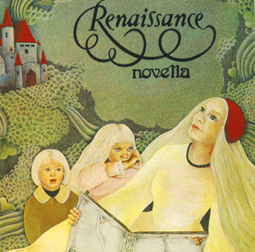
A novella is a work of written, fictional, narrative prose normally longer than a short story but shorter than a novel. The English word "novella" derives from the Italian novella, feminine of novello, which means "new".[1] The novella is a common literary genre in several European languages.
The novella as a literary genre began developing in the early Renaissance by the Italian and French literatura, principally Giovanni Boccaccio, author of The Decameron (1353).[2] The Decameron featured 100 tales (novellas) told by 10 people (seven women and three men) fleeing the Black Death, by escaping from Florence to the Fiesole hills in 1348. This structure was then imitated by subsequent authors, notably the French queen Marguerite de Navarre, whose Heptaméron (1559) included 72 original French tales and was modeled after the structure of The Decameron.
Not until the late 18th and early 19th centuries did writers fashion the novella into a literary genre structured by precepts and rules, generally in a realistic mode. At that time, the Germans were the most active writers of the novelle (German: "Novelle"; plural: "Novellen").[citation needed] For the German writer, a novella is a fictional narrative of indeterminate length—a few pages to hundreds—restricted to a single, suspenseful event, situation, or conflict leading to an unexpected turning point (wendepunkt), provoking a logical but surprising end. Novellen tend to contain a concrete symbol, which is the narrative's focal point.
The Decameron.

The Decameron (Italian: Decameron [deˈkaːmeron; dekameˈrɔn; dekameˈron] or Decamerone [dekameˈroːne]), subtitled Prince Galehaut (Old Italian: Prencipe Galeotto [ˈprentʃipe ɡaleˈɔtto; ˈprɛntʃipe]), is a collection of novellas by the 14th-century Italian author Giovanni Boccaccio (1313–1375). The book is structured as a frame story containing 100 tales told by a group of seven young women and three young men sheltering in a secluded villa just outside Florence to escape the Black Death, which was afflicting the city. Boccaccio probably conceived the Decameron after the epidemic of 1348, and completed it by 1353. The various tales of love in The Decameron range from the erotic to the tragic. Tales of wit, practical jokes, and life lessons contribute to the mosaic. In addition to its literary value and widespread influence (for example on Chaucer's The Canterbury Tales), it provides a document of life at the time. Written in the vernacular of the Florentine language, it is considered a masterpiece of classical early Italian prose.
Frame Story.

A frame story (also known as a frame tale or frame narrative) is a literary technique that sometimes serves as a companion piece to a story within a story, whereby an introductory or main narrative is presented, at least in part, for the purpose of setting the stage either for a more emphasized second narrative or for a set of shorter stories. The frame story leads readers from a first story into another, smaller one (or several ones) within it.
Giovanni Boccaccio.

Giovanni Boccaccio (/boʊˈkɑːtʃiˌoʊ, -tʃoʊ, bə-/; Italian: [dʒoˈvanni bokˈkattʃo]; 1313 – 21 December 1375)[1] was an Italian writer, poet, correspondent of Petrarch, and an important Renaissance humanist. Boccaccio wrote a number of notable works, including The Decameron and On Famous Women. He wrote his imaginative literature mostly in the Italian vernacular, as well as other works in Latin, and is particularly noted for his realistic dialogue which differed from that of his contemporaries, medieval writers who usually followed formulaic models for character and plot.
The Gift Of The Magi.

"The Gift of the Magi" is a short story, written by O. Henry (a pen name for William Sydney Porter), about a young married couple and how they deal with the challenge of buying secret Christmas gifts for each other with very little money. As a sentimental story with a moral lesson about gift-giving, it has been a popular one for adaptation, especially for presentation at Christmas time. The plot and its "twist ending" are well-known, and the ending is generally considered an example of comic irony. It was allegedly written at Pete's Tavern[2] on Irving Place in New York City.
The story was initially published in The New York Sunday World under the title "Gifts of the Magi" on December 10, 1905. It was first published in book form in the O. Henry Anthology The Four Million in April 1906.
O. Henry.
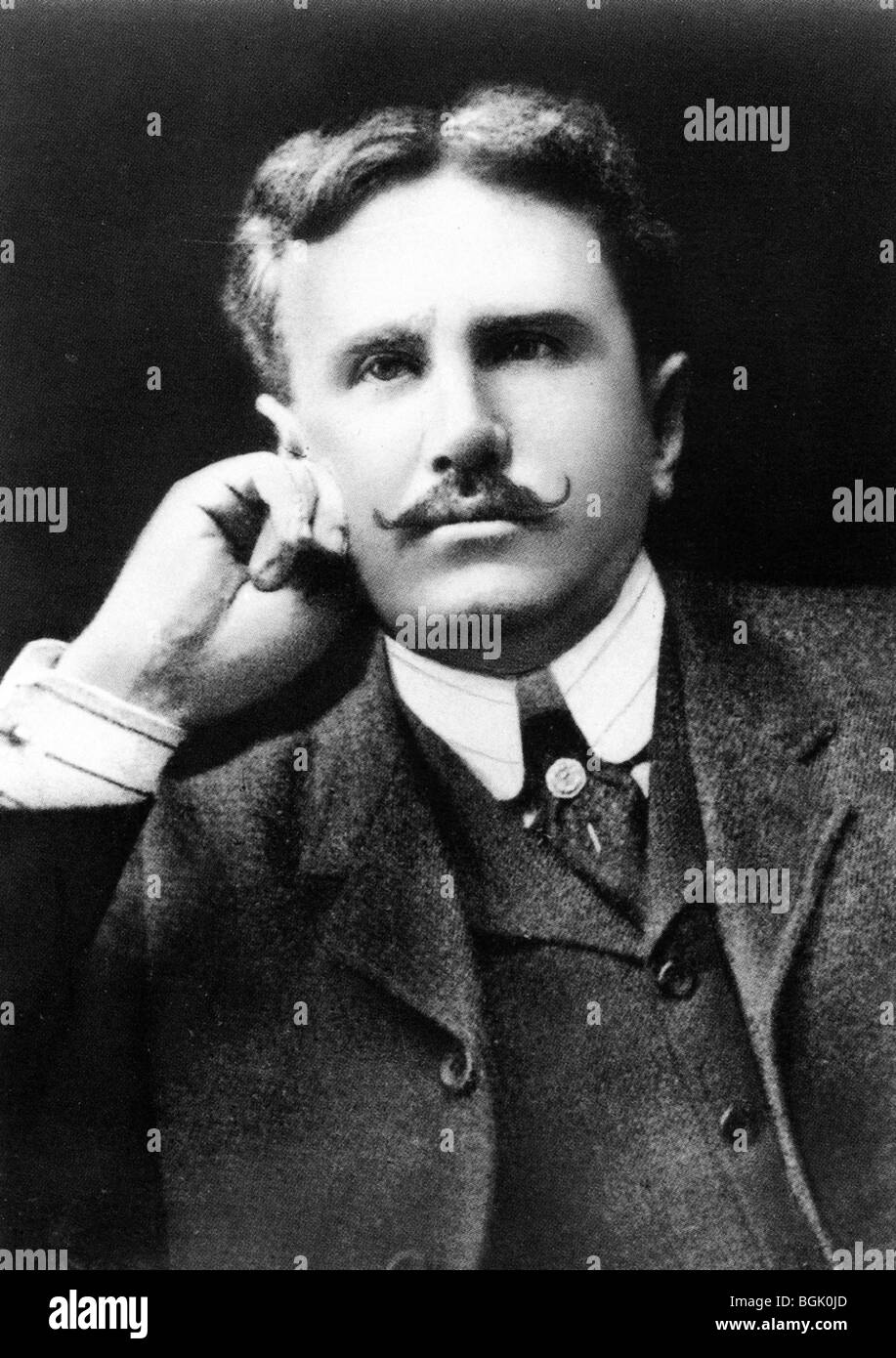
William Sydney Porter (September 11, 1862 – June 5, 1910), known by his pen name O. Henry, was an American short story writer. O. Henry's short stories are known for their surprise endings. William Sidney Porter was born on September 11, 1862, in Greensboro, North Carolina. He changed the spelling of his middle name to Sydney in 1898. His parents were Dr. Algernon Sidney Porter (1825–88), a physician, and Mary Jane Virginia Swaim Porter (1833–65). William's parents had married on April 20, 1858. When William was three, his mother died from tuberculosis, and he and his father moved into the home of his paternal grandmother. As a child, Porter was always reading, everything from classics to dime novels; his favorite works were Lane's translation of One Thousand and One Nights, and Burton's Anatomy of Melancholy.[2]
Porter graduated from his aunt Evelina Maria Porter's elementary school in 1876. He then enrolled at the Lindsey Street High School. His aunt continued to tutor him until he was fifteen. In 1879, he started working in his uncle's drugstore and in 1881, at the age of nineteen, he was licensed as a pharmacist. At the drugstore, he also showed off his natural artistic talents by sketching the townsfolk.
The Tortoise is This (Lyrics).
The Tortoise and The Hare.

"The Tortoise and the Hare" is one of Aesop's Fables and is numbered 226 in the Perry Index.[1] The account of a race between unequal partners has attracted conflicting interpretations. It is itself a variant of a common folktale theme in which ingenuity and trickery (rather than doggedness) are employed to overcome a stronger opponent.
The story concerns a Hare who ridicules a slow-moving Tortoise. Tired of the Hare's boastful behaviour, the Tortoise challenges him to a race.[2] The hare soon leaves the tortoise behind and, confident of winning, takes a nap midway through the race. When the Hare awakes however, he finds that his competitor, crawling slowly but steadily, has arrived before him. The later version of the story in La Fontaine's Fables (VI.10), while more long-winded, differs hardly at all from Aesop's.[3]
Terry Gilliam.

Terrence Vance "Terry" Gilliam (/ˈɡɪliəm/; born 22 November 1940)[2] is an American-born British screenwriter, film director, animator, actor, comedian and member of the Monty Python comedy troupe.
Gilliam has directed 12 feature films, including Monty Python and the Holy Grail (1975), Time Bandits (1981), Brazil (1985), The Adventures of Baron Munchausen (1988), The Fisher King (1991), 12 Monkeys (1995), Fear and Loathing in Las Vegas (1998), The Brothers Grimm (2005) and The Imaginarium of Doctor Parnassus (2009). The only "Python" not born in Britain, he became a naturalised British citizen in 1968 and formally renounced his American citizenship in 2006.
Danae.

In Greek mythology, Danaë (/ˈdæn.i.iː/[1] or /ˈdæn.ə.iː/ dan-ə-ee, as personal name also /dəˈnaɪ/ də-ny, Greek: ΔανάηAncient: [daˈna.ɛː] Modern: [ðaˈna.i]) was the daughter, and only child of King Acrisius of Argos and his wife Queen Eurydice. She was the mother of the hero Perseus by Zeus. She was credited with founding the city of Ardea in Latium during the Bronze Age.
Disappointed by his lack of male heirs, King Acrisius asked the oracle of Delphi if this would change. The oracle announced to him that he would never have a son, but his daughter would, and that he would be killed by his daughter's son. At the time, Danae was childless and, meaning to keep her so, King Acrisius shut her up in a bronze chamber to be constructed under the court of his palace (other versions say she was imprisoned in a tall brass tower with a single richly adorned chamber, but with no doors or windows, just a sky-light as the source of light and air). She was buried in this tomb, never to see the light again. However, Zeus, the king of the gods, desired her, and came to her in the form of golden rain which streamed in through the roof of the subterranean chamber and down into her womb. Soon after, their child Perseus was born.
Vienna Secession.

The Vienna Secession (German: Wiener Secession; also known as the Union of Austrian Artists, or Vereinigung Bildender Künstler Österreichs) was formed in 1897 by a group of Austrian artists who had resigned from the Association of Austrian Artists, housed in the Vienna Künstlerhaus. This movement included painters, sculptors, and architects. The first president of the Secession was Gustav Klimt, and Rudolf von Alt was made honorary president. Its official magazine was called Ver Sacrum.
Gustav Klimt.
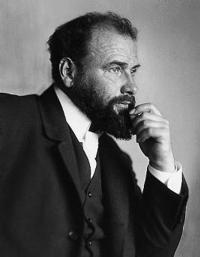
Gustav Klimt (July 14, 1862 – February 6, 1918) was an Austrian symbolist painter and one of the most prominent members of the Vienna Secession movement. Klimt is noted for his paintings, murals, sketches, and other objets d'art. Klimt's primary subject was the female body,[1] and his works are marked by a frank eroticism.[2] In addition to his figurative works, which include allegories and portraits, he painted landscapes. Among the artists of the Vienna Secession, Klimt was the most influenced by Japanese art and its methods.
Early in his artistic career, he was a successful painter of architectural decorations in a conventional manner. As he developed a more personal style, his work was the subject of controversy that culminated when the paintings he completed around 1900 for the ceiling of the Great Hall of the University of Vienna were criticized as pornographic. He subsequently accepted no more public commissions, but achieved a new success with the paintings of his "golden phase", many of which include gold leaf. Klimt's work was an important influence on his younger contemporary Egon Schiele.
Perseus.

In Greek mythology, Perseus (/ˈpɜːrsiəs, -sjuːs/; Greek: Περσεύς), the legendary founder of Mycenae and of the Perseid dynasty of Danaans, was, alongside Cadmus and Bellerophon, the greatest Greek hero and slayer of monsters before the days of Heracles.[1]Perseus beheaded the Gorgon Medusa and saved Andromeda from the sea monster Cetus. Perseus was the son of the mortal Danaë and the god Zeus. He was also the half-brother and great grandfather of Heracles.
Semiotics.
Semiotics (also called semiotic studies; not to be confused with the Saussurean tradition called semiology which is a part of semiotics) is the study of meaning-making, the study of sign processes and meaningful communication.[1] This includes the study of signs and sign processes (semiosis), indication, designation, likeness, analogy, allegory, metonymy, metaphor, symbolism, signification, and communication.
Semiotics is closely related to the field of linguistics, which, for its part, studies the structure and meaning of language more specifically. The semiotic tradition explores the study of signs and symbols as a significant part of communications. As different from linguistics, however, semiotics also studies non-linguistic sign systems.
Pied Piper Of Hamelin.

The Pied Piper of Hamelin (German: Rattenfänger von Hameln also known as the Pan Piper, the Rat-Catcher of Hamelin) is the subject character of a legend from the town of Hamelin (Hameln), Lower Saxony, Germany. The legend dates back to the Middle Ages, the earliest references describing a piper, dressed in multicolored ("pied") clothing, who was a rat-catcher hired by the town to lure rats away [1] with his magic pipe. When the citizens refuse to pay for this service, he retaliates by using his instrument's magical power on their children, leading them away as he had the rats. This version of the story spread as folklore and has appeared in the writings of Johann Wolfgang von Goethe, the Brothers Grimm, and Robert Browning, among others.
Siren.

In Greek mythology, the Sirens (Greek singular: Σειρήν Seirēn;[1] Greek plural: Σειρῆνες Seirēnes) were dangerous creatures, who lured nearby sailors with their enchanting music and voices to shipwreck on the rocky coast of their island. Roman poets placed them on some small islands called Sirenum scopuli. In some later, rationalized traditions, the literal geography of the "flowery" island of Anthemoessa, or Anthemusa,[2] is fixed: sometimes on Cape Pelorum and at others in the islands known as the Sirenuse, near Paestum, or in Capreae.[3] All such locations were surrounded by cliffs and rocks.
Although a Sophocles fragment makes Phorcys their father,[4] when Sirens are named, they are usually as daughters of the river god Achelous, with Terpsichore, Melpomene, Sterope, or Chthon (the Earth). In Euripides' play, Helen (167), Helen in her anguish calls upon "Winged maidens, daughters of the Earth." Although they lured mariners, the Greeks portrayed the Sirens in their "meadow starred with flowers" and not as sea deities. Roman writers linked the Sirens more closely to the sea, as daughters of Phorcys.[5]Sirens are found in many Greek stories, notably in Homer's Odyssey.
Die Nibelungen.

Die Nibelungen (The Nibelungs) is a series of two silent fantasy films created by Austrian director Fritz Lang in 1924: Die Nibelungen: Siegfried and Die Nibelungen: Kriemhild's Revenge.
The screenplays for both films were co-written by Lang's then-wife Thea von Harbou, based upon the epic poem Nibelungenlied written around AD 1200.[1] The Nibelungs received its UK Premiere at the Royal Albert Hall in London , where it played for forty performances between 29 April-20 June 1924. [2] Siegfried was released in the U.S. on 23 August 1925, premiering at the Century Theatre in New York City in the short-lived Phonofilm sound-on-film process. Kriemhild's Revenge was released in the U.S. in 1928.
Lorelei.

The Lorelei (German: Loreley) is a 132 m (433 ft) high, steep slate rock on the right bank of the River Rhine in the Rhine Gorge (or Middle Rhine) at Sankt Goarshausen in Germany.
The name comes from the old German words lureln, Rhine dialect for "murmuring", and the Celtic term ley "rock". The translation of the name would therefore be: "murmur rock" or "murmuring rock". The heavy currents, and a small waterfall in the area (still visible in the early 19th century) created a murmuring sound, and this combined with the special echo the rock produces to act as a sort of amplifier, giving the rock its name.[1] The murmuring is hard to hear today owing to the urbanization of the area. Other theories attribute the name to the many accidents, by combining the German verb "lauern" (to lurk, lie in wait) with the same "ley" ending, with the translation "lurking rock".
In the German language orthographic reform of 1903, in almost all German terms the letter "y" was changed to the letter "i", but in some German names the letter "y" was kept, such as Speyer, Spay, (Rheinberg-)Orsoy, and including Loreley, which is thus the correct spelling in German.
Rhine.

The Rhine (Latin: Rhenus, Romansh: Rein, German: Rhein, French: le Rhin,[1] Dutch: Rijn) is a European river that begins in the Swiss canton of Graubünden in the southeastern Swiss Alps, forms part of the Swiss-Austrian, Swiss-Liechtenstein, Swiss-German and then the Franco-German border, then flows through the Rhineland and eventually empties into the North Sea in the Netherlands. The largest city on the river Rhine is Cologne, Germany, with a population of more than 1,050,000 people. It is the second-longest river in Central and Western Europe (after the Danube), at about 1,230 km (760 mi),[note 2][note 1] with an average discharge of about 2,900 m3/s (100,000 cu ft/s).
The Rhine and the Danube formed most of the northern inland frontier of the Roman Empire and, since those days, the Rhine has been a vital and navigable waterway carrying trade and goods deep inland. The many castles and fortifications along the Rhine testify to its importance as a waterway in the Holy Roman Empire. In the modern era, it has become a symbol of German nationalism.
Lorelei Fountain.

The Lorelei Fountain, also known as the Heinrich Heine Memorial, is located on East 161st Street in Melrose/Morrisania, in the Bronx, New York City, near the Bronx County Courthouse. It is a white marble fountain dedicated to the memory of the German poet and writer Heinrich Heine. Heine had once written a poem devoted to the Lorelei, a feminine water spirit much like a mermaid that is associated with the Lorelei rock in St. Goarshausen, Germany. The monument was originally to be placed in Heine's hometown of Düsseldorf, but antisemitism and nationalistpropaganda in the German Empire precluded the completion of the monument on Heine's 100th birthday in 1897. Instead, it was unveiled on July 8, 1899 in the presence of the sculptor, Ernst Herter, in The Bronx.
Femme Fatale.

A femme fatale (/ˌfæm fəˈtɑːl/ or /ˌfɛm fəˈtɑːl/; French: [fam fatal]) is a stock character of a mysterious and seductive woman whose charms ensnare her lovers, often leading them into compromising, dangerous, and deadly situations. She is an archetype of literature and art. Her ability to entrance and hypnotise her victim with a spell was in the earliest stories seen as being literally supernatural; hence, the femme fatale today is still often described as having a power akin to an enchantress, seductress, vampire, witch, or demon, having power over men.
The phrase is French for "fatal woman". A femme fatale tries to achieve her hidden purpose by using feminine wiles such as beauty, charm, and sexual allure. In some situations, she uses lies or coercion rather than charm. She may also make use of some subduing weapon such as sleeping gas, a modern analog of magical powers in older tales. She may also be (or imply that she is) a victim, caught in a situation from which she cannot escape; The Lady from Shanghai (a 1947 film noir) is one such example.
Salome.
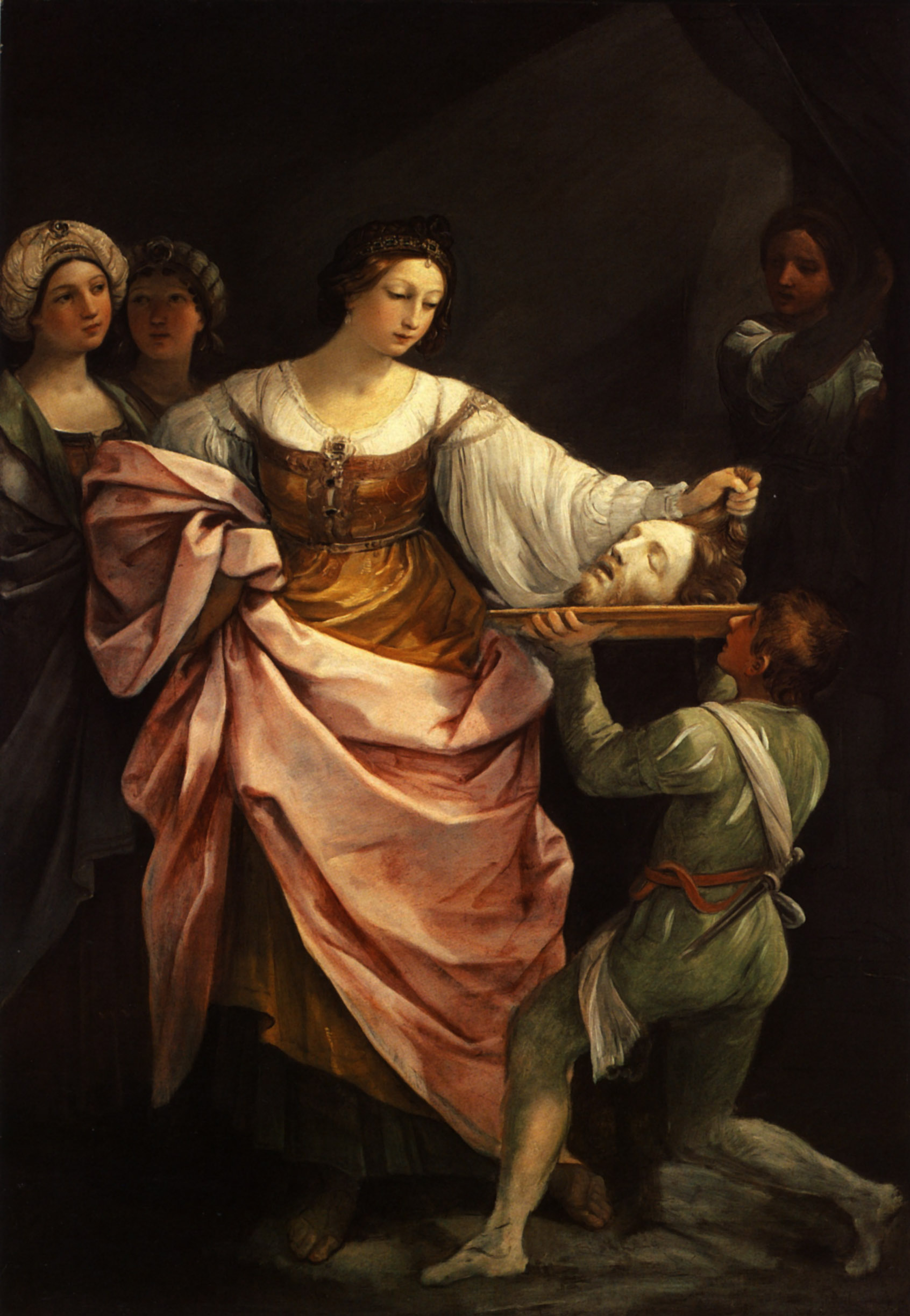
Salome (/səˈloʊmiː/;[1] Greek: Σαλώμη Salōmē, pronounced [salóːmeː]; c. AD 14 – between 62 and 71) was the daughter of Herod II and Herodias. She is infamous for demanding and receiving the head of John the Baptist, according to the New Testament. According to Flavius Josephus's Jewish Antiquities, Salome was first married to Philip the Tetrarch of Ituraea and Trakonitis. After Philip's death in 34 AD she married Aristobulus of Chalcis and became queen of Chalcis and Armenia Minor. They had three children. Three coins with portraits of Aristobulus and Salome have been found.[2] Her name in Hebrew is שלומית (Shlomiẗ, pronounced [ʃlomiθ]) and is derived from the root word שָׁלוֹם (shalom), meaning "peace".[3]
Herod II.
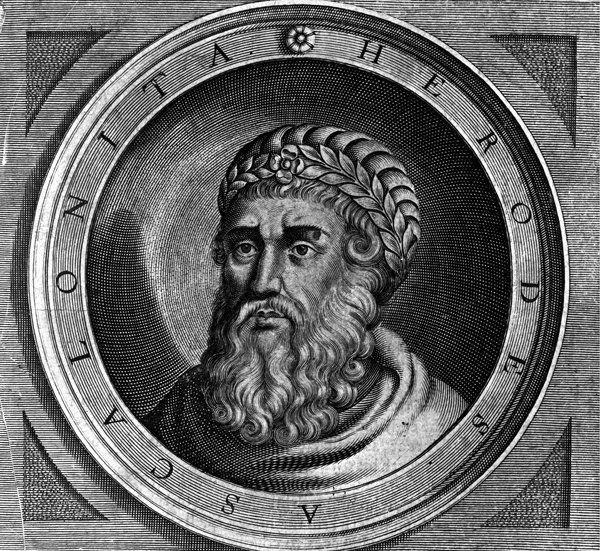
Herod II (ca. 27 BC – 33/34 AD)[1][2] was the son of Herod the Great and Mariamne II, the daughter of Simon Boethus the High Priest (Mark 6:17). For a brief period he was his father's heir. Some writers call him Herod Philip I (not to be confused with Philip the Tetrarch, whom some writers call Herod Philip II).
Herod was the first husband of Herodias, and because the Gospel of Mark states that Herodias was married to Philip, some scholars have argued that his name was actually Herod Philip. Many scholars dispute this, however, and believe the Gospel writer was in error, a suggestion supported by the fact that the later Gospel of Luke drops the name Philip.[3][4] Because he was the grandson of the high priest Simon Boethus he is sometimes described as Herod Boethus, but there is no evidence he was actually called this.[5]
Dance of the Seven Veils.

The Dance of the Seven Veils is a term used to refer to the dance performed by Salome before Herod Antipas. It is an elaboration on the biblical story of the execution of John the Baptist, which refers to Salome dancing before the king, but does not give the dance a name.
The name "Dance of the Seven Veils" originates with the 1893 English translation of Oscar Wilde's 1891 French play Salome in the stage direction "[Salome dances the dance of the seven veils.]".[2] The dance was also incorporated into Richard Strauss's opera Salome. Wilde's choice of title for the dance has been linked to the popularity of orientalist "veil dances" in the period and to the emergence of striptease acts.
Vocabulary.
1. Quarantine.

沒有留言:
張貼留言